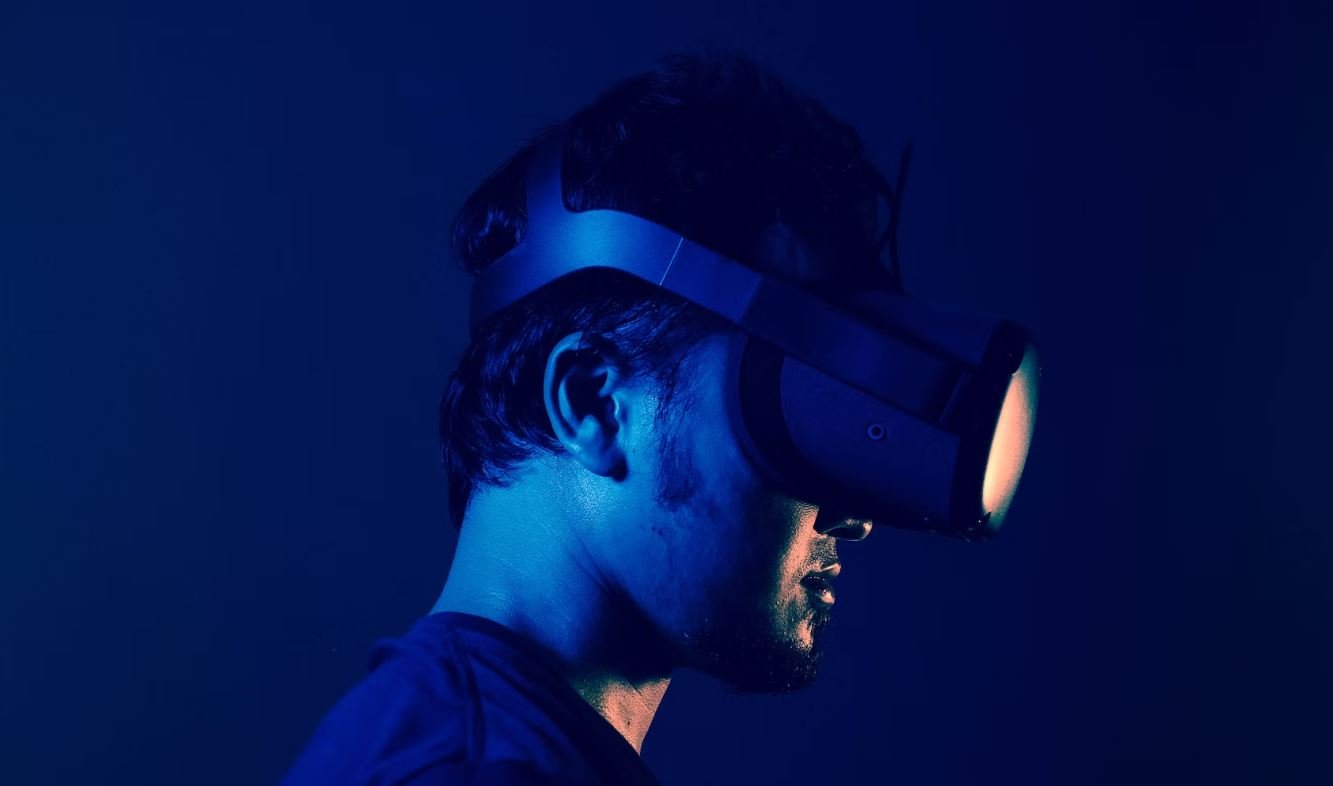Deep Fake: Is It Real?
Deep Fake technology has become a hot topic in recent years, raising concerns about the potential misuse of AI-driven algorithms to create videos and images that are virtually indistinguishable from reality. This technology has primarily been used for entertainment purposes, but its implications on privacy, security, and misinformation are concerning. In this article, we will explore the reality of deep fakes and their impact on society.
Key Takeaways
- Deep Fake technology uses artificial intelligence to create realistic but fake media.
- It has both positive and negative implications.
- Deep fakes can be used for entertainment, but also pose risks for privacy, security, and misinformation.
- Technological advancements are making it increasingly difficult to spot deep fakes.
- Regulations and awareness are necessary to mitigate the potential harm caused by the misuse of deep fake technology.
**Deep Fake** technology relies on cutting-edge algorithms and machine learning techniques to manipulate images and videos. By training AI models on vast amounts of data, deep fakes can generate highly realistic media that can be challenging to distinguish from genuine content.
*One interesting aspect of deep fakes is their ability to swap faces between people, allowing for realistic impersonation.* This has led to both creative uses in the entertainment industry and serious concerns about potential misuse.
The Potential of Deep Fake Technology
Deep Fake technology has the potential to revolutionize various fields, including entertainment, education, advertising, and more. Here are some of its potential uses:
- **Entertainment**: Deep fakes can be used to create realistic computer-generated content for movies, TV shows, and video games, enhancing the overall viewing experience.
- **Education**: Deep Fake technology can be used in educational settings to create interactive learning materials or realistic simulations.
- **Advertising and Marketing**: Deep fakes can be utilized in advertising campaigns to promote products or services in a more engaging and memorable way.
However, alongside these positive applications, deep fakes also pose significant challenges and risks.
The Dark Side of Deep Fakes
Deep Fake technology has raised concerns due to its potential negative consequences:
- **Privacy**: Deep fakes can be used to create non-consensual explicit content by digitally replacing the faces of individuals with malicious intent.
- **Misinformation**: Deep fakes have the potential to spread misinformation by creating fake videos or audios of public figures, politicians, or celebrities.
- **Impersonation and Fraud**: The ability to swap faces convincingly enables cybercriminals to impersonate others, leading to identity theft and various forms of fraud.
*It is crucial to raise awareness and develop methods to detect and combat these threats to prevent their negative impact on individuals and society at large.*
Recognizing Deep Fakes
As deep fake technology continues to advance, it becomes increasingly challenging to identify manipulated media. However, there are some telltale signs to look out for when trying to determine the authenticity of a video or image:
- **Inconsistencies**: Pay attention to inconsistencies in facial movements, unnatural blinks, or lack of shadows.
- **Artifacts**: Deep fakes may have visual artifacts, such as blurry or distorted areas, especially around the borders of the subject’s face.
- **Context**: Consider the context in which the media is presented. If the video or image seems unlikely or out of character for the subject, it might be a deep fake.
Current Efforts and Future Considerations
In response to the potential dangers of deep fakes, various initiatives have been taken to address the issue. Governments, technology companies, and researchers are investing in developing tools and techniques to detect and prevent the malicious use of this technology.
*One interesting approach is the use of blockchain technology to timestamp and verify the authenticity of media, providing a tamper-proof record.*
Table 1: Examples of Deep Fake Misuse
| Domain | Example |
|---|---|
| Politics | Deep fakes of politicians making controversial statements. |
| Entertainment | Fake celebrity interviews or scandals. |
| Adult Content | Non-consensual explicit deep fakes. |
Table 2: Indicators of Deep Fakes
| Indicator | Description |
|---|---|
| Facial Inconsistencies | Unnatural facial movements or lack of synchronization with audio. |
| Visual Artifacts | Blurry or distorted areas around the face or other parts of the image. |
| Contextual Incongruity | The video or image seems out of character for the subject or situation. |
Table 3: Initiatives to Address Deep Fake Threats
| Initiative | Description |
|---|---|
| Research and Development | Investing in the development of advanced AI algorithms and tools for deep fake detection. |
| Regulation | Enacting laws and regulations to criminalize the malicious use of deep fake technology. |
| Awareness Campaigns | Raising public awareness about the existence and potential dangers of deep fakes. |
Deep Fake technology is certainly real, and its implications cannot be ignored. As technology continues to advance, it is vital to stay informed and proactive in tackling the challenges posed by this powerful AI-driven tool.

Common Misconceptions
Misconception 1: Deep Fakes are Almost Perfectly Indistinguishable
One common misconception about deep fakes is that they are virtually flawless and impossible to detect. However, this is not entirely true. While deep fake technology has certainly advanced in recent years, there are still some noticeable signs that can help identify a deep fake video or image.
- Deep fakes often have subtle imperfections, such as mismatched lighting or shadows.
- In certain cases, deep fakes may exhibit some blurring or distortion around the edges of the face or body.
- Audio in deep fake videos can sometimes sound unnatural or out of sync with the visuals.
Misconception 2: Deep Fakes are only used for Harmful Purposes
Another misconception is that deep fakes are solely created for malicious activities, such as spreading misinformation or defaming individuals. While there have been cases where deep fakes were used for harmful purposes, it’s important to note that this technology has potential applications in various fields, including entertainment and visual effects.
- Deep fakes can be used in the film industry to digitally recreate deceased actors or enhance special effects.
- Researchers are exploring the use of deep fakes in virtual reality and augmented reality applications.
- Artists and musicians can utilize deep fake technology to create unique and captivating multimedia experiences.
Misconception 3: Deep Fakes Always Involve Manipulating People’s Faces
When discussing deep fakes, many people assume that the technology is exclusively used for altering or impersonating someone’s face. Although facial manipulation is one of the most common applications of deep fakes, it certainly isn’t the only one.
- Deep fake technology can also be used to alter the voice of an individual, creating convincing audio impersonations.
- Entirely synthesized images or videos, without any real person’s face, can be generated using deep fake algorithms.
- Deep fakes have been employed to manipulate and alter the appearance of objects or landscapes in visual media.
Misconception 4: Deep Fakes are Easily Accessible to Everyone
Some people mistakenly believe that creating a deep fake is a simple process and that anyone can do it with minimal technical skills. In reality, developing high-quality deep fakes requires expertise and access to powerful computational resources.
- Creating convincing deep fakes requires specialized knowledge of machine learning techniques.
- Training deep fake algorithms often requires large datasets and significant computational power.
- While there are user-friendly software applications available, mastering the nuances of deep fake creation still demands significant time and effort.
Misconception 5: Deep Fakes Will Always Be a Serious Threat
While deep fakes do pose potential risks, it is crucial to avoid the misconception that they will always remain a severe and widespread threat to society. Although deep fake technology can be misused, there are also various strategies and countermeasures being developed to detect and combat the spread of malicious deep fakes.
- Researchers are actively working on developing better detection algorithms to quickly identify deep fakes.
- Educating the public about the existence of deep fakes and the signs to look for can help minimize their impact.
- Legal measures and regulations are being implemented to address the potential misuse of deep fake technology.

The Rise of Deep Fake Technology
Deep fake technology has been gaining widespread attention and concern in recent years. With the ability to create highly believable fake videos and images, deep fakes have the potential to spread misinformation and deceive viewers. This article aims to explore various aspects of deep fake technology and shed light on its reality.
The Impact of Deep Fakes on Politics
Politicians and political campaigns are increasingly being targeted by deep fakes, which can be used to spread false information or manipulate public opinion. The following table provides a glimpse into some notable instances where deep fakes have influenced political scenarios.
The Entertainment Industry and Deep Fake
Deep fake technology has found its way into the entertainment industry, enabling filmmakers to resurrect deceased actors or create convincing special effects. The following table highlights some remarkable cases where deep fake technology has been utilized for entertainment purposes.
Deep Fake in Journalism: Ethical Concerns
Journalism is another field greatly impacted by deep fake technology, calling into question the credibility of media sources. The table below showcases a few instances of deep fakes influencing the world of journalism.
Deep Fake and Cybersecurity
The rise of deep fake technology has presented challenges in the realm of cybersecurity. The table provided here presents a few key incidents where deep fakes have been utilized for malicious purposes or caused security concerns.
Deep Fake Detection Tools and Techniques
As the threat of deep fakes increases, researchers and organizations around the world have been working diligently to develop detection tools and techniques. This table offers an insight into some notable advancements in the field.
The Legal and Ethical Implications of Deep Fakes
The existence of deep fake technology poses various legal and ethical challenges. The following table delves into a few instances where deep fakes have had significant legal and ethical implications.
Deep Fakes in Social Media
Social media platforms have become breeding grounds for the spread of deep fakes. This table highlights a few instances where deep fakes have caused controversies or viral sensations on social media.
Deep Fake and Identity Fraud
Identity fraud is a concerning repercussion of deep fake technology. The table below showcases some notable cases where deep fakes have been used for identity fraud or impersonation.
Combating Deep Fakes: Global Efforts
As the impact of deep fakes becomes increasingly evident, governments, organizations, and individuals worldwide are taking steps to combat this technology. The following table outlines various global efforts to address the challenge of deep fakes.
Conclusion
Deep fake technology is undeniably real and poses serious implications for society. As seen through various examples in this article, deep fakes have infiltrated politics, entertainment, journalism, cybersecurity, and social media, among other domains. The rapid advancements in deep fake technology necessitate the development of effective detection techniques and the introduction of stringent regulations. Only through the combined efforts of technological innovation, ethical considerations, and legal policies can we hope to mitigate the risks associated with deep fakes and protect the integrity of information in the digital age.
Frequently Asked Questions
What is a deep fake?
What is a deep fake?
How does deep fake technology work?
How does deep fake technology work?
What are the potential impacts of deep fake technology?
What are the potential impacts of deep fake technology?
Can deep fakes be easily detected?
Can deep fakes be easily detected?
Are there any positive uses for deep fake technology?
Are there any positive uses for deep fake technology?
What are the legal and ethical concerns surrounding deep fakes?
What are the legal and ethical concerns surrounding deep fakes?
Are there any efforts to counter deep fakes?
Are there any efforts to counter deep fakes?
Can deep fake technology be used in cyber attacks?
Can deep fake technology be used in cyber attacks?
How can individuals protect themselves from deep fakes?
How can individuals protect themselves from deep fakes?
What is being done at the policy level to address deep fakes?
What is being done at the policy level to address deep fakes?




